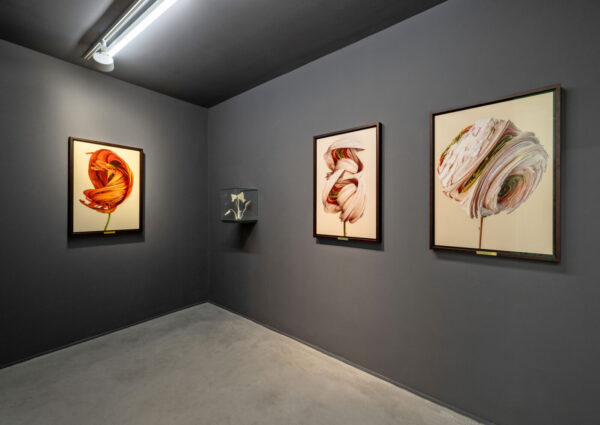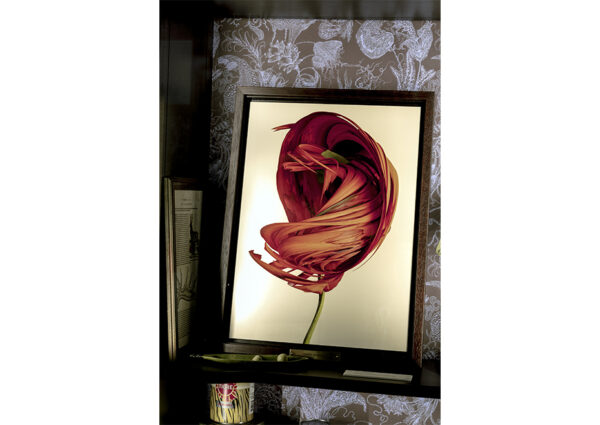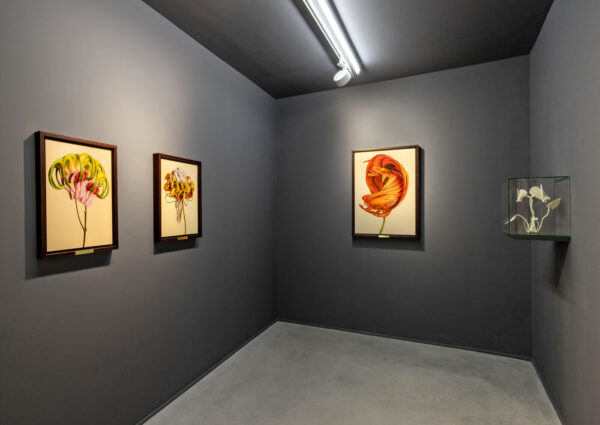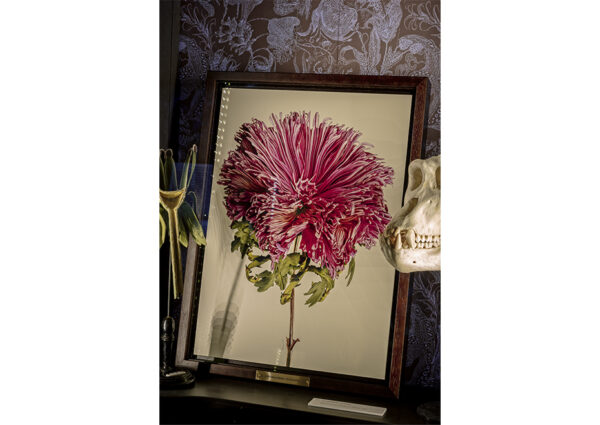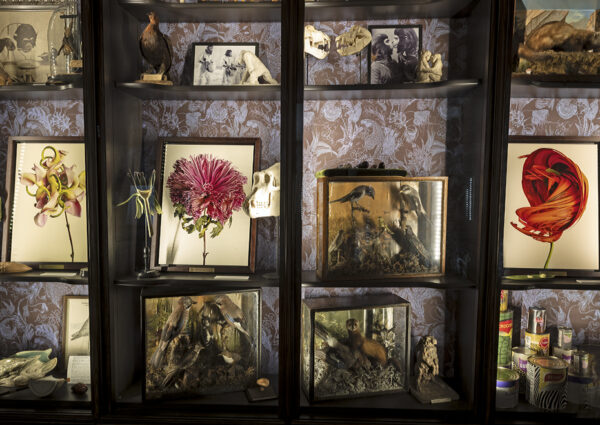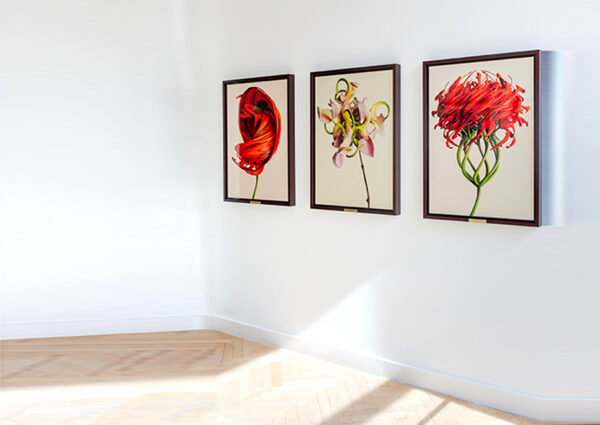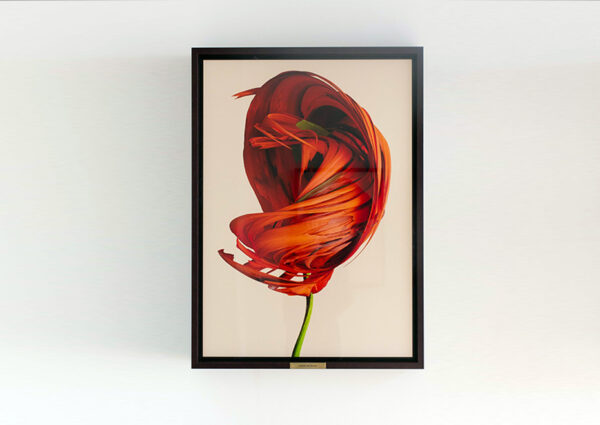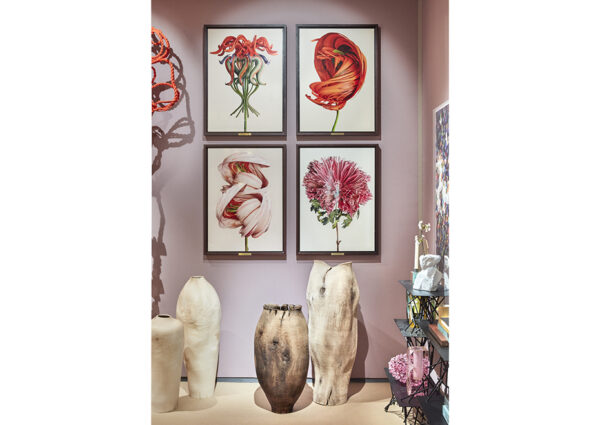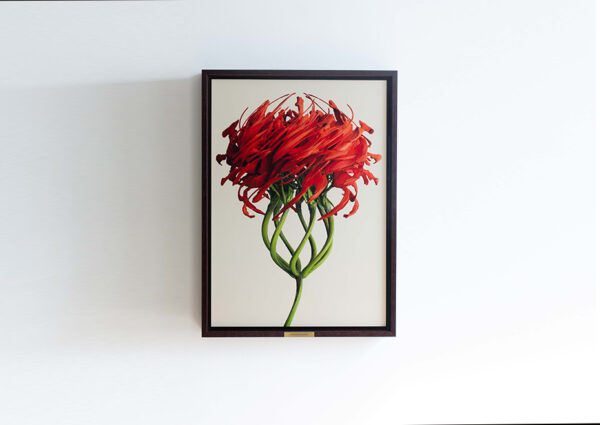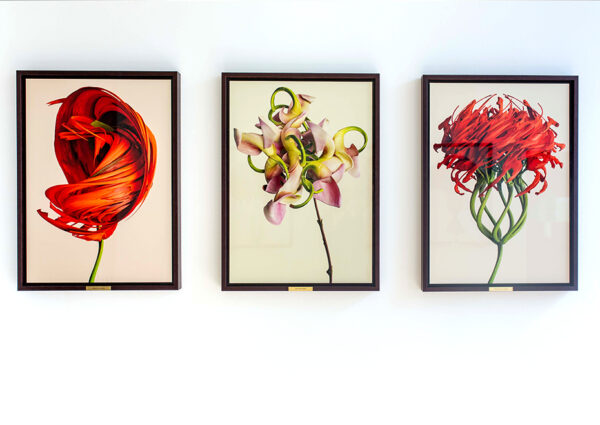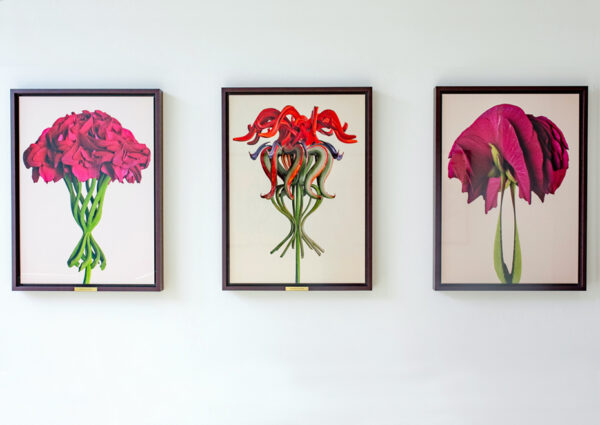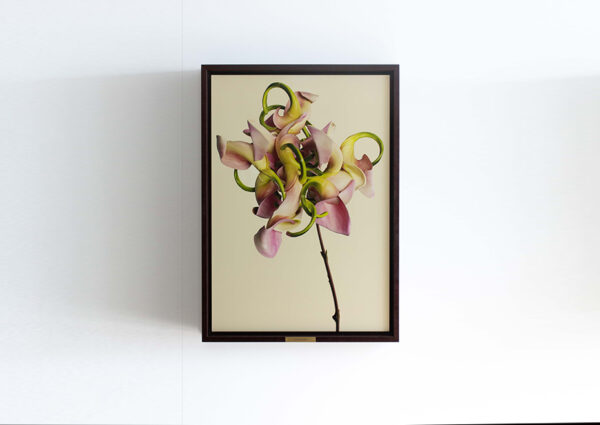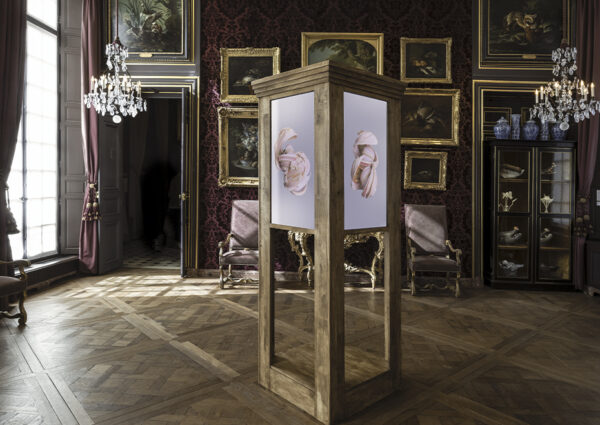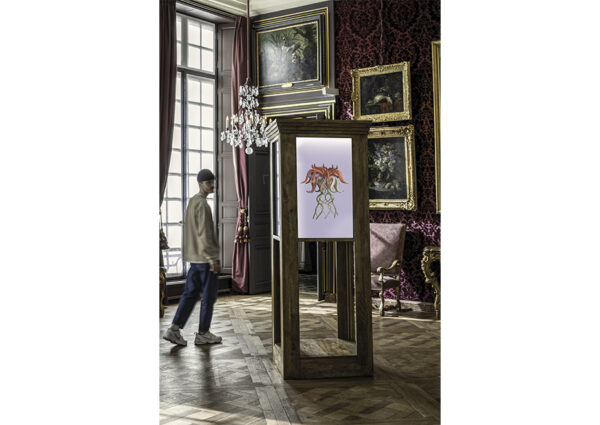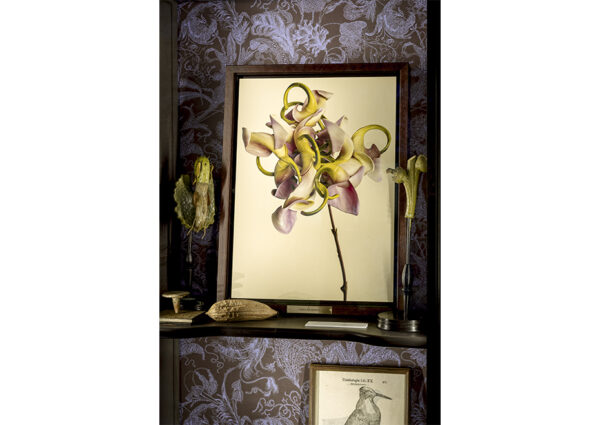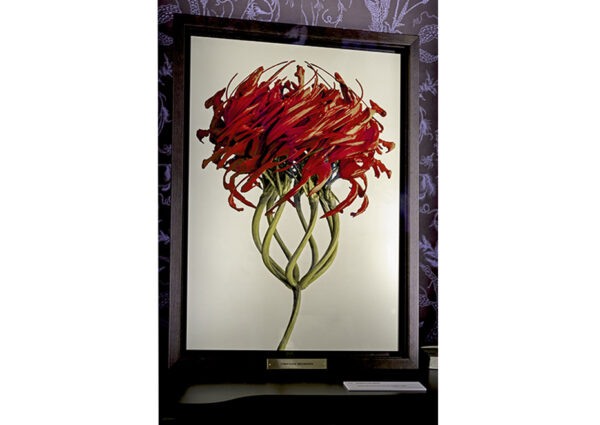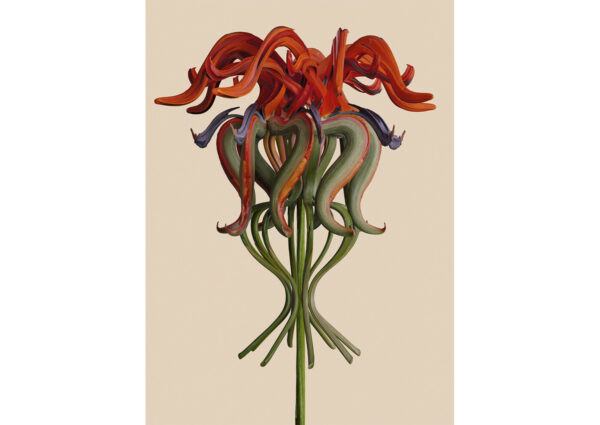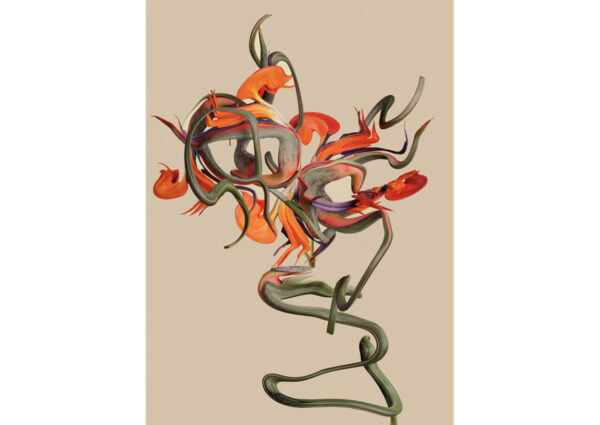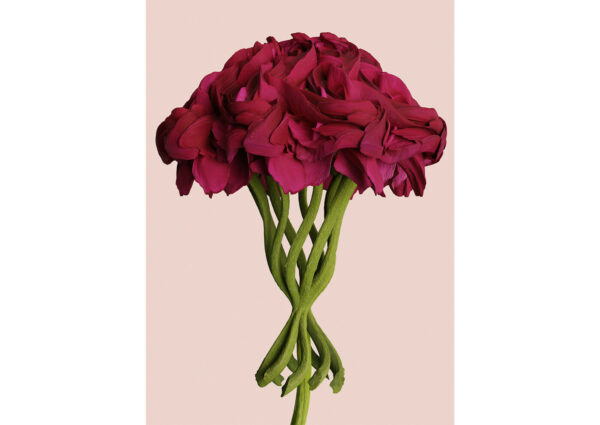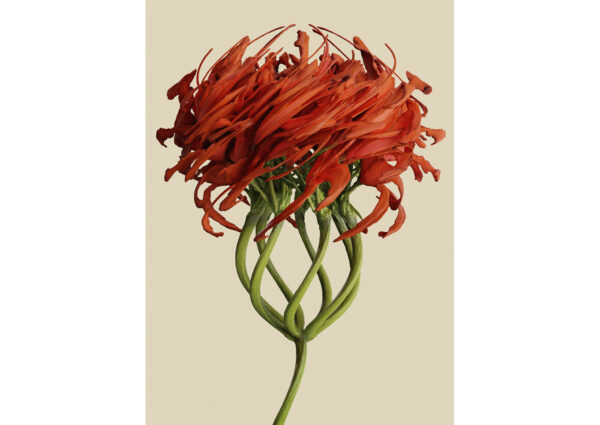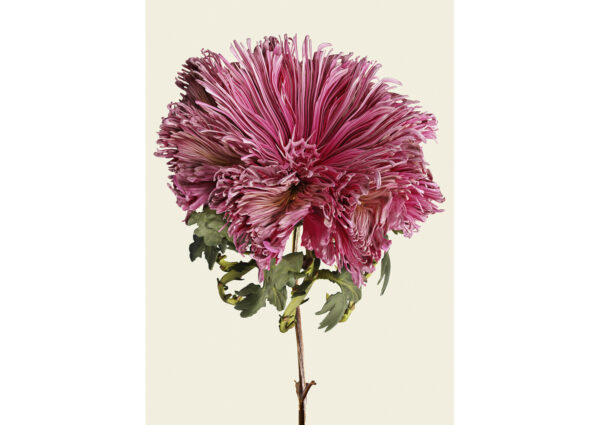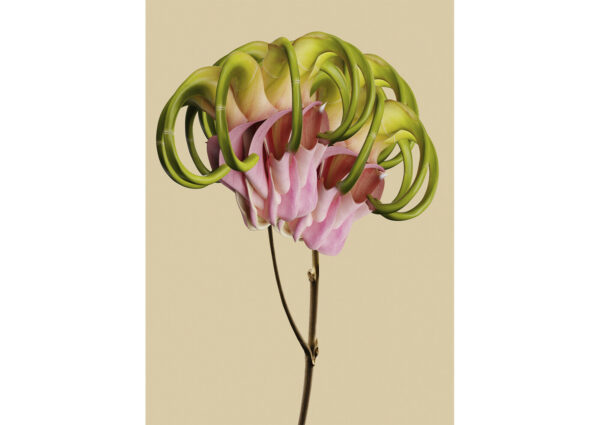Flora incognita
Atlas d’Astrobotanique Potentielle
Entre surréalisme et hypothèses scientifiques, le projet Flora incognita spécule sur les formes de vie végétale présentes sur des planètes en dehors du sytème solaire. Cette œuvre d’anticipation s’appuie sur les récents progrès du télescope James Webb, aujourd’hui capable de détecter les caractéristiques des planêtes et par conséquence, les conditions de potentielles vies extraterrestres.
Sur ces exoplanètes, les forces fondamentales de la physique sont différentes de celles que nous connaissons. Les changements extrêmes de gravité entrainent des architectures végétales dynamiques et résistantes. Les plantes suivent les courants des champs électromagnétiques pour optimiser leur reproduction Elles sont capables de métaboliser le fer et les roses tourbillonnent pour mieux embrasser la puissance des vents supersoniques.
Par effet miroir, imaginer l’adaptabilité d’une flore extraterrestre en milieu extrème voire hostile invite à réfléchir aux défis actuels sur Terre, et à notre propre résilience face aux déreglements climatiques.
Flora incognita aspire à célébrer la complexité et la beauté du vivant.
_
Les 37 planches qui composent le projet Flora incognita ont été créées grâce à la technique de la photogrammétrie permettant de scanner le réel en détail. Les plantes ont ensuite été transformées de manière plausible selon des environnements et des forces à l’œuvre sur différentes exoplanètes, simulées ou réelles. Une photographie extraite de ces expérimentations vient restituer le résultat final. Elle est accompagnée d’une légende expliquant comment les forces et contraintes de l’exoplanète ont influencé la forme du végétal. Certains scénarios s’inspirent également des stratégies de résilience de végétaux observées sur Terre en milieux extrêmes.
_
Edition
10 + 2 épreuves d’artiste, tous formats confondus
Formats
40×55 cm / 65×90 cm
Technique
Tirage chromogène sur papier Ilfoflex, contrecollé sur dibond avec encadrement boîte américaine chêne, verre musée et plaque en laiton.
Flora incognita
Atlas d’Astrobotanique Potentielle
Between surrealism and scientific hypotheses, the Flora Incognita project speculates on the forms of plant life present on planets outside our solar system. This work of anticipation builds on recent advances from the James Webb Telescope, now capable of detecting the characteristics of planets and, consequently, the conditions for potential extraterrestrial life.
On these exoplanets, the fundamental forces of physics are different from those we know. Extreme changes in gravity result in dynamic and resilient plant architectures. Plants follow electromagnetic field currents to optimize their reproduction. They can metabolize iron, and roses swirl to better embrace the power of supersonic winds.
By a mirror effect, imagining the adaptability of extraterrestrial flora in extreme or even hostile environments invites reflection on current challenges on Earth and our own resilience in the face of climate disruptions. Flora Incognita aspires to celebrate the complexity and beauty of life.
_
The 37 plates that make up the Flora Incognita project were created using photogrammetry, a technique that allows for detailed scanning of real objects. The plants were then plausibly transformed according to the environments and forces at work on various exoplanets, both simulated and real. A photograph extracted from these experiments presents the final result, accompanied by a caption explaining how the forces and constraints of the exoplanet influenced the plant’s form. Some scenarios are also inspired by the resilience strategies of plants observed on Earth in extreme environments.
_
Edition
10 + 2 Artist proofs, all formats included.
Format
2 formats : 40×55 cm / 15.74 x 21.65 inch and 65×90 cm / 25,60×35,43 inch
Technique
Chromogenic print on Ilfoflex paper, mounted on Dibond with oak shadow box framing, museum glass, and brass plate.
